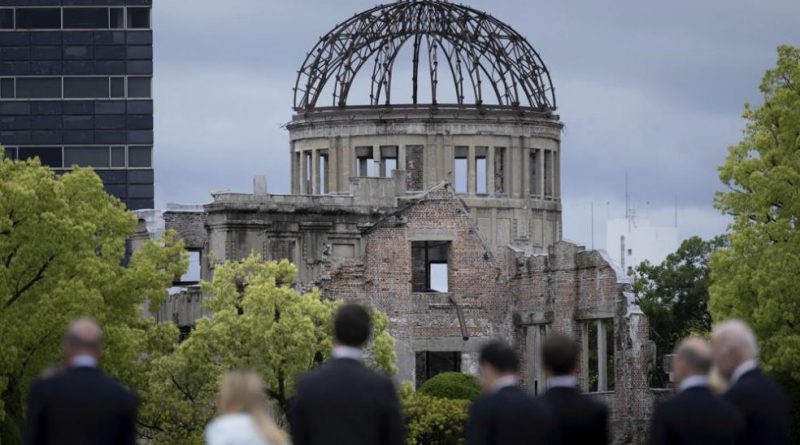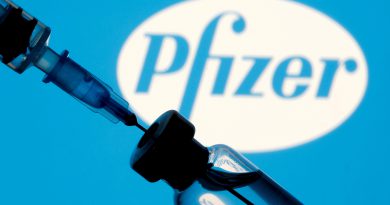Atomic bomb survivors look to G7 summit as a ‘sliver of hope’ for nuclear disarmament
“But because they are meeting in Hiroshima I do have a sliver of hope that they will have positive talks and make a tiny step toward nuclear disarmament,” Kido said
Hiroshima (AP) — This weekend’s summit of the Group of Seven leading industrial nations in Hiroshima provides a rare — and possibly final — chance for survivors of the atomic bomb attacks on Hiroshima and Nagasaki to push for nuclear disarmament before a global audience.
Prime Minister Fumio Kishida, who has roots in Hiroshima, chose the city in part to highlight nuclear nonproliferation efforts, which have been shaken by Russia’s nuclear threats against Ukraine and rising aggression from nuclear-armed China and North Korea.
He greeted leaders from the G7 on Friday at the city’s Peace Memorial Park and escorted them as they paid respects to those who died in the attack, visited a museum dedicated to the victims and met with a survivor. On Sunday, Kishida will do the same for leaders from non-G7 guest nations.
Kishida has pledged to act as a bridge between nuclear and non-nuclear states, but some critics say his disarmament goals are hollow. Japan relies on the United States nuclear umbrella for protection and has been rapidly expanding its military.
Sueichi Kido, a 83-year-old survivor of the Nagasaki explosion, said he is skeptical whether the prime minister can convince the leaders of G7 nations — including nuclear states the U.S., the United Kingdom and France — to make real progress in disarmament.
“But because they are meeting in Hiroshima I do have a sliver of hope that they will have positive talks and make a tiny step toward nuclear disarmament,” Kido said.
Later Friday, the G7 leaders issued a joint statement on nuclear disarmament titled “Hiroshima Vision” which calls for continued non-use of nuclear weapons, transparency and reductions in nuclear stockpiles. Critics charged that it contained no new actual steps.
The United States conducted the world’s first atomic attack on Hiroshima on Aug. 6, 1945, destroying the city and killing 140,000 people. It dropped a second bomb three days later on Nagasaki, killing another 70,000. Japan surrendered on Aug. 15, ending World War II.
Kido said he hoped the leaders would spend more time than former U.S. President Barack Obama did in his rushed 2016 visit through the museum, which includes exhibits of mangled buildings and bodies in the aftermath of the attack.
Obama’s trip to Hiroshima was the first by a serving U.S. leader.
“I earnestly want the leaders to have a firm understanding of what the atomic bombs did to human beings,” Kido said. “Many people think of the mushroom clouds, but they often don’t know what happened to the people under them.”
Some survivors expressed disappointment that the leaders met with only one survivor and made no comment about their museum visit.
Kunihiko Sakuma, who was exposed as a 9-month-old baby to radiation from the bombing, said he spent Friday watching TV coverage of the leaders’ visit to the museum and felt it was short and superficial.
“I have no idea if they understood what we survivors are saying,” he said.
He urged the leaders to explain to people in their countries what they learned about the cruelty of nuclear weapons. “Each leader should do that so every citizen understands. Otherwise, the real threat of nuclear bombs cannot be understood,” he said.
Kishida has been criticized by survivors for his plan to double Japan’s defense budget in the next five years. He is looking to fund a military buildup that will strengthen strike capabilities meant to deter China’s rising threat.
Japan wants to deepen three-way ties with the United States and South Korea to step up nuclear deterrence. But it also refuses to sign the Treaty on the Prohibition of Nuclear Weapons despite repeated requests by atomic bomb survivors that it do so. Kishida says the nuclear weapons ban treaty, which took effect in 2021, is unworkable because it lacks the membership of nuclear states. Instead, he said, Japan needs to take a realistic approach to bridging the gap between nuclear and non-nuclear states in a challenging world.
As a child, Kishida heard about the horrors of the atomic bombing from his grandmother. She was from Hiroshima and her stories left “an indelible mark,” inspiring him to work toward a world without nuclear weapons, said Noriyuki Shikata, Cabinet secretary for public affairs. He said Kishida’s determination has been reinforced by becoming a politician representing the people of Hiroshima.
“A path to a world without nuclear weapons has become even more difficult,” Kishida told foreign media, including The Associated Press, in April. “But that’s why we need to keep raising the flag of our ideal and regain a new momentum.”
An estimated 12,705 warheads were in nuclear inventories as of 2022, most of them held by the United States and Russia, according to the Stockholm International Peace Research Institute.
Kido, the Nagasaki survivor, was 5 when he saw a flash in the sky and was buffeted by the blast on the morning of Aug. 9, 1945.
He had burns on his cheek but was reunited with his family at a shelter. When he went outside the next day, charred bodies were everywhere and people were walking around and begging for water with their flesh dangling.
“Everything turned black,” he said. “The town was entirely wiped out.”
Kido is among a shrinking number of survivors who can tell firsthand stories about the bombings.
“We won’t be around much longer. Survivors of Hiroshima and Nagasaki will be gone,” he said. “We all share a strong determination that we should never let anyone else become victims and feel this pain. And the surest way to do it is to make a world without nuclear weapons, to abolish atomic weapons, and not wage war, because nuclear weapons won’t be used if there is no war.”
Many survivors have lived for decades with lingering sadness, anger, fear and shame in Japan, where victims and their children faced discrimination because people believed radiation sickness was infectious or hereditary.
After decades of silence, some survivors began to speak out with the desperate hope that younger generations would carry on their unfinished work.
It took Kido more than 40 years to join the anti-nuclear weapons movement in Gifu, where he taught history at a local university and learned that there was no organization to help survivors in the prefecture.
Support from young people was the main driving force behind the achievement of the Treaty on the Prohibition of Nuclear Weapons that led to the awarding of the Nobel Peace Prize in 2017 to the International Campaign Against Nuclear Weapons, said Setsuko Thurlow, a Hiroshima atomic bomb survivor and activist based in Canada.
“For many years, atomic bombing survivors have raised the torch of achieving peace by denuclearization. We need younger and stronger hands who can succeed the torch and raise it even higher so its light can be seen from around the world,” said Thurlow, who was only 1.8 kilometers (1.1 miles) away from ground zero in Hiroshima at the time of the bombing.



